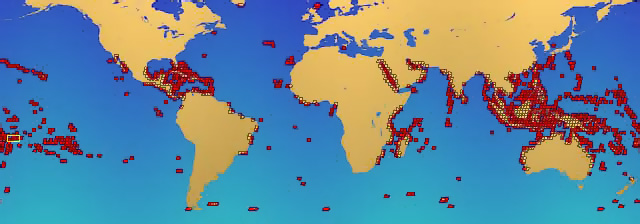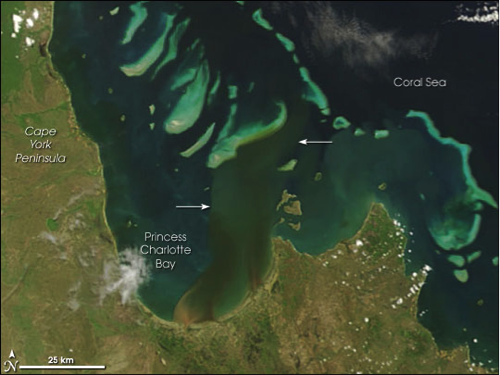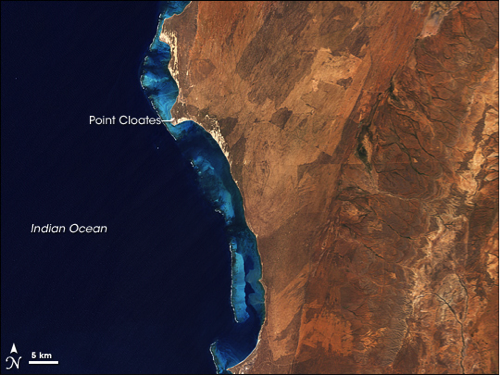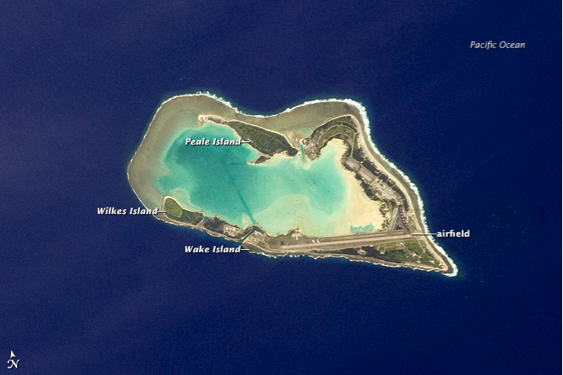Global Distribution of Coral Reefs
The vast majority of large reefs created by corals in shallow, sunlit waters (< 50 m water depth) are located within a tropical zone located between 30º N and 30º S latitude with a preferred temperature range of approximately 22º to 29º C. Corals also grow best in areas with little suspended sediment in the water, so large coral reefs systems are not common to locations where there is a large input of sediment to the coastal zone by river systems. Although there are cold, deep water types of coral present in the ocean basins, they do not create large nearshore reef structures that affect adjacent coasts.

In total, there are three main types of shallow water coral reef structures: 1) barrier reefs, 2) fringing reefs, and 3) coral atolls. These three types are differentiated on the basis of proximity to land, the overall scale of the reef structure, and the shape of the reef.
- Barrier reefs are typically large-scale, linear features that extend parallel to a shore, with a lagoon between the reef and the mainland.
- Fringing reefs are directly attached to the shore, with no well-developed lagoon between the reef structure and the mainland.
- Coral atolls are circular reefs that often start out as fringing reefs attached to a volcanic island. As the volcanic islands subside, the reef grows upward and a lagoon develops behind the reef and inside the submerging island. Eventually, the island can subside below the water level, and a ringlike coral reef structure remains.



Recommended Readings and Video: For more information on coral and coral reefs, check out these links:
- Coral Reef, Wikipedia
- Corals and Coral Reefs, Smithsonian Natural Museum of Natural History
- Atoll, Wikipedia
- Formation of coral islands, 38-second video
